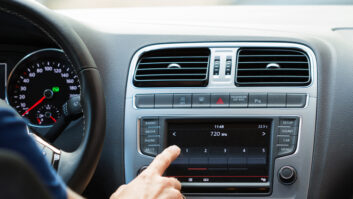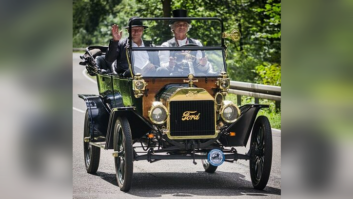Radio World’s “Guest Commentaries” section provides a platform for industry thought leaders and other readers to share their perspective on radio news, technological trends and more. If you’d like to contribute a commentary, or reply to an already published piece, send a submission to [email protected].
The author is the director of automotive connected mobility in the Global Automotive Practice at TechInsights.
There’s no such thing as a free lunch, unless you are a radio broadcaster in the U.S. In that event you are free to access the public airwaves to broadcast your content and car makers automatically include radio receivers in their cars to tune into your signals.
Radio’s cushy deal with the Federal Communications Commission may continue unmolested, but at least one observer thinks the free ride from automakers is on the verge of ending. Radio provocateur and enfant terrible Jerry Del Colliano asserts in his latest newsletter communication that “Automakers are Considering Removing Free FM.”
Del Colliano’s claim, though perhaps apocryphal, is difficult to dismiss. No doubt Jerry knew it would be hard to ignore or dismiss when he wrote it.
Broadcast radio remains a most mysterious medium 100 years after it was first conceived. Promoters tout radio’s reach — universally proclaimed to be the widest audience reach of any communications medium regardless of location around the world — and the high level of trust attributed to its content. I just got an earful of these dual claims from multiple speakers at Radiodays Europe 2023.
Reach and trust and $4 will get you a cup of coffee at Starbucks. If you are an automaker in today’s market, you are looking for sources of revenue, and radio is not justifying its presence in the dashboard with a revenue contribution.
In the U.S., SiriusXM saw this problem long ago and implemented a business model that included subsidized hardware, a revenue share and premium content. Radio is like your freeloading cousin who moved in last year and is showing no signs of leaving – and he isn’t doing any of the shopping or cleaning around the house/apartment either.
Automakers are looking at bringing streaming audio and video, videogames, and social media into the car. Expectations are that these services will create solid revenue opportunities. Radio is offering emergency notifications; local traffic and weather. Weak tea, at best.
Meanwhile, over-air-television is knocking at the door in the form of ATSC 3.0 — capable of in-vehicle reception of digital television. With the onset of ATSC 3.0 across the U.S., the presence of radio in the dashboard just got that much more precarious — dare I say tenuous?
Multiple automakers have deleted AM reception from their electric vehicles. Even smartphone mirroring appears to be on the outs based on announcements from Mercedes and General Motors.
ATSC 3.0 technology — which will require additional hardware and software — looks attractive not only for bringing free over-the-air digital video to vehicles but also for datacasting opportunities (i.e. software updates) and enhanced positioning technology in support of safety systems. Also, ATSC 3.0 will deliver something new and novel — free digital TV for cars — a technology that has eluded the electronics industry for decades.
[Read More Guest Commentaries Here]
With so many new content sources and revenue opportunities coming into cars, radio is rapidly becoming a liability. We already know that in most new cars it’s hard to find the radio, let alone tune to your favorite station. Why bother?
Turn radio into an app and charge a subscription. TuneIn anyone?
For automakers, the radio broadcast industry on the whole is recalcitrant and ultimately uninterested in automaker priorities. Car makers want simplified interfaces and, in the case of radio, consistent delivery of meta data and other digital assets.
Automakers have demonstrated some tolerance for being bullied and buffaloed. For the past 10 years, they have allowed Apple and Google to call the tune as to how in-dash infotainment systems are designed and configured. Auto engineers have swallowed their pride and accepted the edicts of both Google and Apple, even submitting their work for review and approval to both organizations.
Recent announcements from Mercedes and General Motors suggest these companies are tiring of the browbeating. Both GM and Mercedes appear to be turning their backs on Apple and its CarPlay smartphone mirroring. (It’s a poorly kept secret that automotive engineers love to hate Apple — even more than Google. Can you say “My way or the highway”?)
If GM and Mercedes can turn away from Apple, dropping broadcast AM/FM radios may no longer seem so far-fetched. Cost and complexity for software-centric in-vehicle systems have soared to such a degree that the auto industry appears to have entered an all-bets-are-off phase.
Nothing is sacred any longer. No system in the car is sacrosanct, especially as regards the infotainment system.
If an automaker can shift much of the functionality into the cloud and leverage connectivity while limiting the array of on-board gear — hallelujah. Maybe Google or TuneIn will help foot the wireless bill, SiriusXM-style. If the on-board hardware is unable to deliver a revenue generating business proposition — it’s out.
So, yeah, maybe Jerry Del Colliano is correct. I hope not. I am skeptical. But there are some indicators that suggest that radio is living on borrowed time in the dashboard and the clock is ticking.







